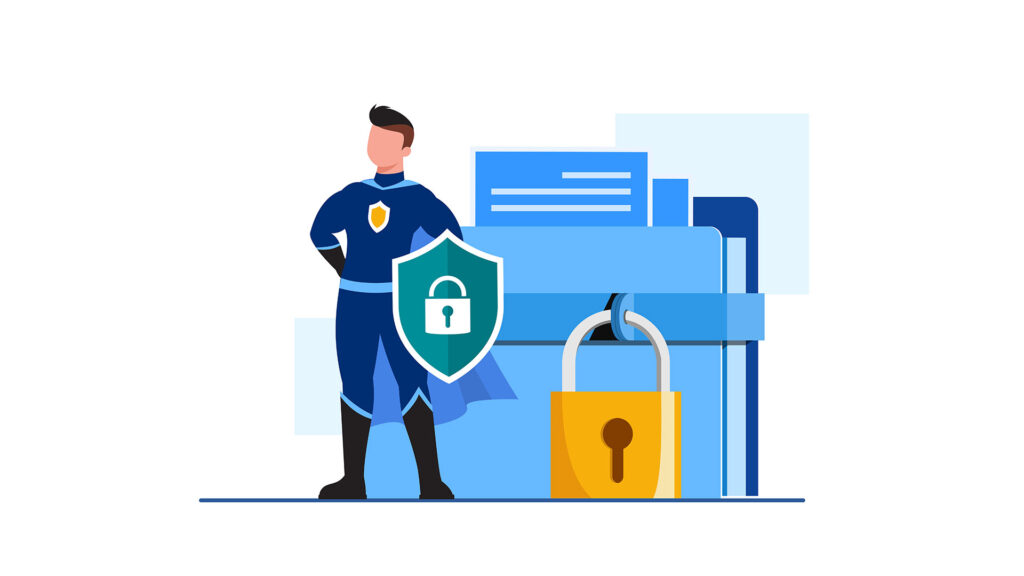Domain records, also known as zone files, are text files that contain instructions about a domain, such as its IP address and how to handle requests. They are the building blocks of the Domain Name System (DNS).
When you type a website name into your web browser or click a link from a search engine result, you are first routed to a DNS server that tells your computer which IP address is associated with that domain name. It’s similar to a phone operator manually connecting your call.
DNS records help users connect to websites by mapping human-readable domain names to the server IDs that contain them. This process is known as Domain Name Resolution.
This process allows website owners to host a variety of different resources across several different servers. When a website changes its IP address, the DNS server automatically redirects a user without them even knowing the IP changed.
Related: Domain vs. Website: What’s the difference?
Essential Domain Records: What Every Website Owner Should Know
Domain records are stored in authoritative DNS servers, from where a visitor can be directed to the appropriate resource. Depending on your requirements, different records serve distinct purposes:
Forwarding Records
These records are ideal for scenarios where you want to maintain a presence at a particular domain but direct all traffic to a different website. They are easy to set up and manage, requiring minimal configuration. Forwarding records are commonly used when you have multiple domain names pointing to the same website or when pointing your domain to social media profiles.
A and AAAA Records
An A Record (Address Record) points a domain or subdomain to an IPv4 address, while an AAAA Record (Quad-A Record) points to an IPv6 address. These records are essential for translating domain names into IP addresses that computers use to identify each other on the network.
CNAME Records
(Canonical Name Record) redirect one domain or subdomain to another domain name. They’re useful for aliasing multiple domain names to a single IP address managed by an A or AAAA record. CNAME records alias one domain name to another. They are commonly used to map a subdomain to another domain, such as redirecting “blog.yoursite.com” to “yoursite.com/blog”.
NS Records
NS records, or Name Server records, define the authoritative DNS servers for a DNS zone. They specify which servers are responsible for handling DNS queries for your domain.
MX Records
MX records, or Mail Exchange records, are used for mail service discovery. They specify the mail servers responsible for receiving email on behalf of your domain.
TXT Records
TXT records are versatile and can be used for various purposes. They are commonly used for storing text-based information, such as verification IDs for third-party services or SPF records for email authentication.
How Records Protect a Domain

Related: How Domain Names Are Making Online Identity Verification Easier and Safer
TXT records in DNS serve several important functions for domain security and verification:
Domain Ownership Verification: Services like SSL certificate providers and domain registrars often require domain owners to verify ownership. A TXT record can store a unique verification code provided by the service to confirm the domain belongs to the person claiming it.
Storing Public Key Information: TXT records can hold public key information for secure email communication, ensuring that messages are encrypted and authenticated.
Policy Implementation: They can store policies like DMARC, which uses SPF and DKIM to determine the authenticity of an email message, helping protect against spoofing and phishing attempts.
These records are flexible and can contain any text, allowing domain administrators to use them for a variety of purposes beyond the original intention of providing human-readable notes.
Email Spam Prevention: TXT records are used to implement email authentication methods like SPF (Sender Policy Framework), DKIM (DomainKeys Identified Mail), and DMARC (Domain-based Message Authentication, Reporting & Conformance). These records help email servers verify if messages are from a trusted source, making it harder for spammers to spoof domains.
There are three main email standards to help prevent spoofing and phishing of a domain. These standards also help ensure outgoing messages aren’t marked as spam.
Sender Policy Framework (SPF)
SPF lets the domain owner authorize IP addresses that are allowed to send email for the domain. Receiving servers can verify that messages appearing to come from a specific domain are sent from servers allowed by the domain owner.
Domain Keys Identified Mail (DKIM)
DKIM adds a digital signature to every sent message. Receiving servers use the signature to verify messages are authentic, and weren’t forged or changed during transit. Without DKIM, messages sent from your organization or domain are more likely to be marked as spam by receiving mail servers.
To enable DKIM signatures for your domain, add a Domain Name System (DNS) TXT record. Note: some mail providers may use a CNAME record. DKIM keys are generated by your mail provider. The text record will typically be auto generated with a matching host and value.
Domain-based Message Authentication, Reporting, and Conformance (DMARC)
DMARC helps prevent hackers and other attackers from impersonating a domain. DMARC also lets you request reports from email servers that get messages from your organization or domain. These reports have information to help you identify possible authentication issues and malicious activity for messages sent from your domain.
Related: Effective Strategies for Protecting Your Domain from Spoofing and Email Spam

Domain Record Lookup
You can use a website that gathers domain information to look up public information about your name server. For example, you can enter your domain name in the search field, such as mywebsite.com, and look up the domain information.
You can look up domain records for free on several websites. Some popular options include:
Whois.com: Offers a Whois lookup service that provides domain and IP search.
Nslookup.io: A web-based DNS client that queries DNS records for a given domain name without caching the results.
Domain.com: Provides a WHOIS lookup to reveal who owns or manages a domain name, including their contact information.
These services allow you to check various DNS records, including A, AAAA, MX, NS, TXT, and others, to gather information about domain ownership, configuration, and more.
Summary
Understanding domain records is necessary for anyone looking to establish an online presence. Whether you’re starting a new business or seeking to enhance your visibility on the internet, mastering the fundamentals of domain records empowers you to manage and protect your online assets.
From mapping domain names to IP addresses to implementing email authentication methods, domain records play a vital role in ensuring the smooth functioning and security of your online activities. By comprehending the various types of records and their purposes, you can make informed decisions to optimize your domain’s performance and protect it from potential threats.
The availability of free domain record lookup services makes it convenient for individuals and businesses to access essential information about their domains, facilitating better management and troubleshooting when needed.
You May Also Like
- 10 Essential Tips for Choosing the Right Domain Registrar
- .NET: The Forgotten Domain Extension That’s Perfect for AI
- Don’t Get Fooled by Lookalike Domains: A Cybersecurity Wake-Up Call
- Go with a .co? Weighing the Pros and Cons of the Second Most Trusted TLD
- How to Install HestiaCP on Ubuntu 20.04/18.04 and Debian 10/9
